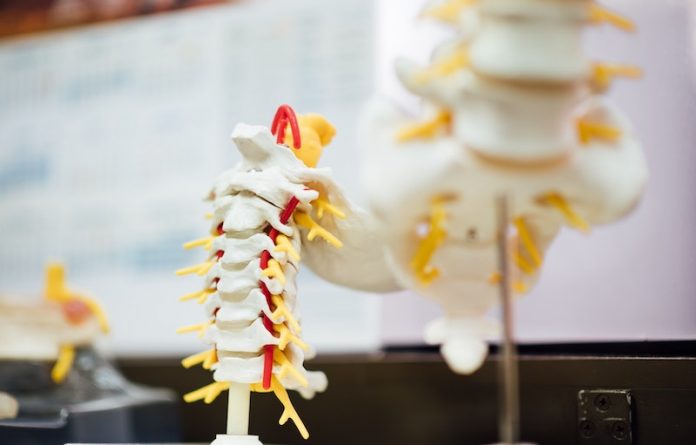
Scientists from the University of Birmingham found that a new drug currently in development as cancer therapy can foster regeneration of damaged nerves after spinal injury.
The research is published in Clinical and Translational Medicine and was conducted by Professor Zubair Ahmed et al.
In the study, the team used cell and animal models to demonstrate that when taken orally the candidate drug, known as AZD1390, can block the response to DNA damage in nerve cells and promote regeneration of damaged nerves, so restoring sensory and motor function after spinal injury.
The announcement comes weeks after the same research team showed a different investigational drug (AZD1236) can reduce damage after spinal cord injury, by blocking the inflammatory response.
AZD1390 is also under investigation by AstraZeneca to block ATM-dependent signaling and repair DNA double-strand breaks (DSBs), an action that sensitizes cancer cells to radiation treatment.
The DNA Damage Response system (DDR) is activated by DNA damage, including DSBs in the genome, which occur in several common cancers and also after spinal cord injury.
Researchers hypothesized the persistent activation of this system may prevent recovery from spinal cord injury, and that blocking it would promote nerve repair and restore function after injury.
Their initial studies found that AZD1390 stimulated nerve cell growth in culture and inhibited the ATM protein kinase pathway—a critical biochemical pathway regulating the response to DNA damage.
The researchers then used animal models to investigate the effect of AZD1390 following spinal cord injury.
Here they showed that oral treatment with AZD1390 resulted in significant suppression of the ATM protein kinase pathway, nerve regeneration beyond the site of injury, and the ability of these nerves to carry electrical signals across the site of the injury.
The team is excited about AZD1390 which can be taken orally and reaches the site of injury in sufficient quantities to promote nerve regeneration and restore lost function.
The findings showed a remarkable recovery of sensory and motor functions, and AZD1390-treated animals were indistinguishable from uninjured animals within 4 weeks of injury.
If you care about pain, please read studies that cannabis hemp oil may effectively treat chronic neuropathic pain, and a new way to treat chronic pain.
For more information about pain management, please see recent studies that COVID-19 infection could reduce pain, and results showing pain-free microneedle patch may replace needles for blood draws.
Copyright © 2022 Knowridge Science Report. All rights reserved.



